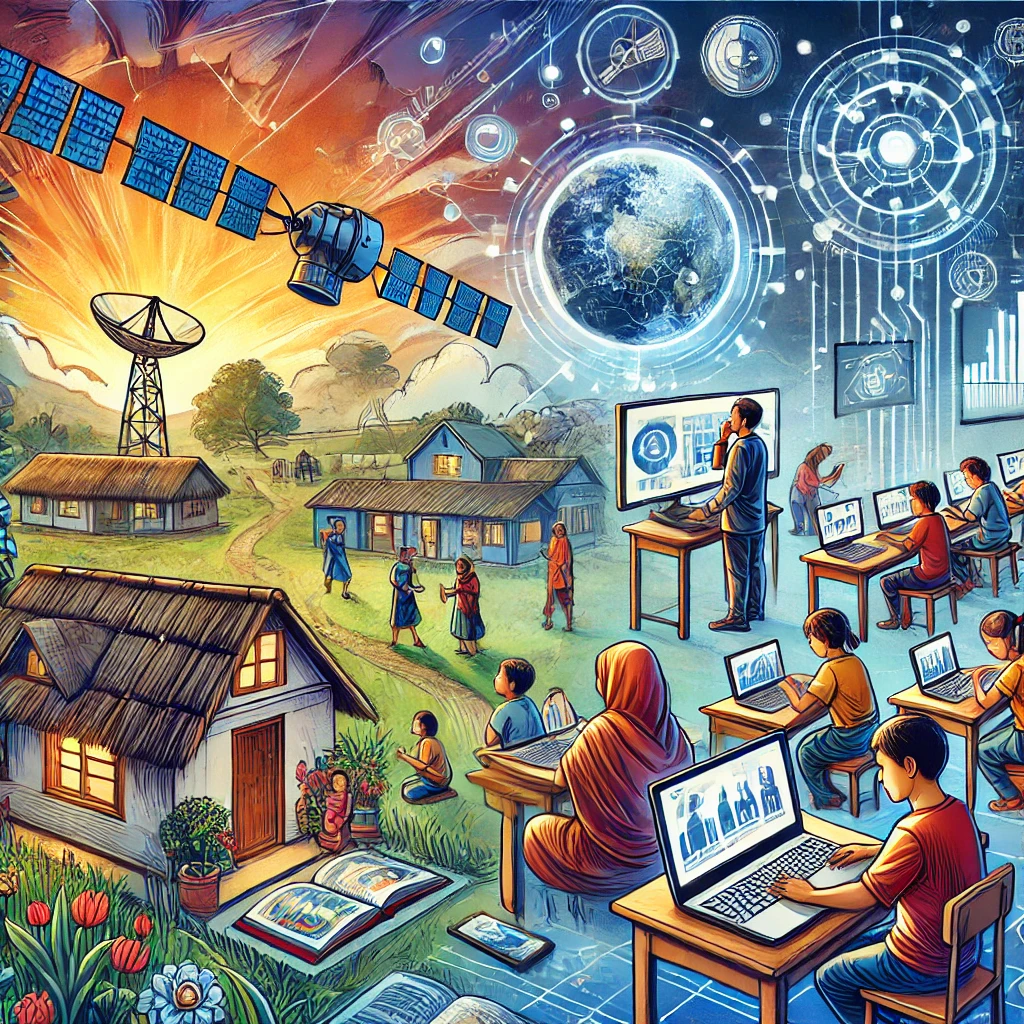Education is a basic human right, but many face obstacles in accessing quality education due to their location, finances, or social factors. Technology has become a powerful tool in overcoming these challenges, making learning resources more accessible. From online learning platforms to AI-based personalized education, digital tools are changing the way education is delivered.
This article will look at how technology is helping to close education gaps, the most effective digital tools, and the upcoming challenges.
Understanding Education Gaps
Education gaps arise due to several factors such as:
- Location: Students in remote areas may not have access to schools or experienced teachers.
- Socioeconomic Status: Low-income families may find it hard to afford private education or necessary learning materials.
- Disabilities: Traditional education systems can be challenging for students with physical or learning disabilities.
- Global Crises: Events like pandemics, wars, and natural disasters disrupt education for millions.
Technology offers scalable solutions to these problems, providing tools that can be tailored to various needs and environments.
Digital Tools That Are Bridging the Gap
Several digital tools and platforms have proven to be transformative in education. These include:
1. Online Learning Platforms
Platforms such as Coursera, Khan Academy, and edX offer high-quality courses from top institutions. These platforms provide:
- Affordable Education: They break down financial barriers by offering free or low-cost courses.
- Flexibility: Students can learn at their own pace, fitting education into their schedules.
- Global Reach: Courses are accessible to anyone with internet access.
2. Virtual Classrooms
Tools like Zoom, Google Meet, and Microsoft Teams enable live, interactive lessons. These are crucial for:
- Remote Learning: They ensure the continuity of education during times of crisis.
- Teacher-Student Interaction: They facilitate real-time engagement despite physical separation.
3. Adaptive Learning Software
AI-powered tools such as DreamBox, Duolingo, and Smart Sparrow personalize learning by:
- Assessing Progress: They evaluate individual progress.
- Customizing Lessons: They offer lessons tailored to each student’s strengths and weaknesses.
- Motivating Students: They use gamified elements and instant feedback to keep students engaged.
4. Open Educational Resources (OER)
Platforms like OpenStax and UNESCO’s OER initiative provide free textbooks and teaching resources. These materials:
- Reduce Costs: They lower the financial burden of education.
- Customization: They allow teachers to tailor content to their students’ needs.
5. Educational Apps
Mobile apps like Quizlet, Socrative, and Photomath make learning accessible anytime, anywhere. They are valuable for:
- Quick Revisions: They offer short exercises for review.
- Interactive Learning: They engage students through games and quizzes.
6. Assistive Technology
For students with disabilities, tools like screen readers, speech-to-text software, and specialized keyboards enable equal access to education.
How Technology Bridges Education Gaps
Technology addresses education gaps in several ways:
1. Reaching Remote Areas
Satellite internet, offline learning apps, and portable devices bring education to underserved regions. For example:
- One Laptop Per Child (OLPC): Distributes affordable laptops preloaded with educational content to remote communities.
- Offline Platforms: Tools like Kolibri facilitate learning without a constant internet connection.
2. Addressing Financial Barriers
Free and open-source platforms lower the cost of educational materials, making them accessible to low-income families. Initiatives like Google Classroom provide schools with free tools to enhance learning.
3. Supporting Diverse Learners
AI and adaptive technologies cater to students with unique learning needs, ensuring that all students have the opportunity to succeed.
In conclusion, technology plays a crucial role in bridging the gaps in education. By leveraging digital tools, we can make quality education accessible to everyone, regardless of their circumstances.
Digital Tools in Modern Education
Enhancing Learning for Diverse Needs
Speech-to-text software supports students with dyslexia, while multilingual resources help non-native speakers.
Enabling Lifelong Learning
Digital platforms enable adults to acquire new skills, crucial in a changing job market. Services like LinkedIn Learning and Udemy offer accessible education for working individuals.
Crisis-Resilient Education
During global disruptions like the COVID-19 pandemic, technology maintained education through online classes, digital tasks, and virtual exams.
Success Stories: Real-World Impact
BYJU’S in India
This major edtech company offers app-based learning designed for Indian students, including those in rural areas. Its engaging content and adaptive tests have reached millions.
Rwanda’s Smart Classroom Initiative
The Rwandan government collaborated with tech firms to provide schools with laptops, internet, and digital resources, greatly enhancing educational outcomes.
UNESCO’s Global Education Coalition
This initiative links governments and tech companies to ensure educational access during crises, offering free resources to millions worldwide.
Challenges and Limitations
Despite its advantages, technology in education faces several obstacles:
Digital Divide
Many students lack access to devices or reliable internet, especially in developing areas.
Teacher Training
Teachers need proper training to effectively use digital tools and integrate them into teaching.
Over-Reliance on Technology
Too much screen time and dependence on digital tools can affect critical thinking and social skills.
Data Privacy
The use of digital platforms raises concerns about student data protection and privacy.
The Future of Digital Learning
As technology progresses, its role in education will expand, introducing new possibilities such as:
- AI Tutors: Offering personalized guidance and feedback.
- Virtual Reality (VR) and Augmented Reality (AR): Creating immersive learning experiences, like virtual science labs or historical simulations.
- Blockchain: Ensuring secure academic records and certificates to prevent fraud.
- 5G Connectivity: Improving the quality and speed of online learning in remote areas.
Conclusion
Technology has proven to be a powerful tool in closing education gaps, providing inclusive and scalable solutions for students and educators worldwide. However, to fully harness its potential, issues such as accessibility, teacher training, and data security must be addressed.
As digital tools evolve, they promise to make education universally accessible. With the right strategies, technology can transform this vision into reality, empowering learners and fostering a more equitable future for all.
